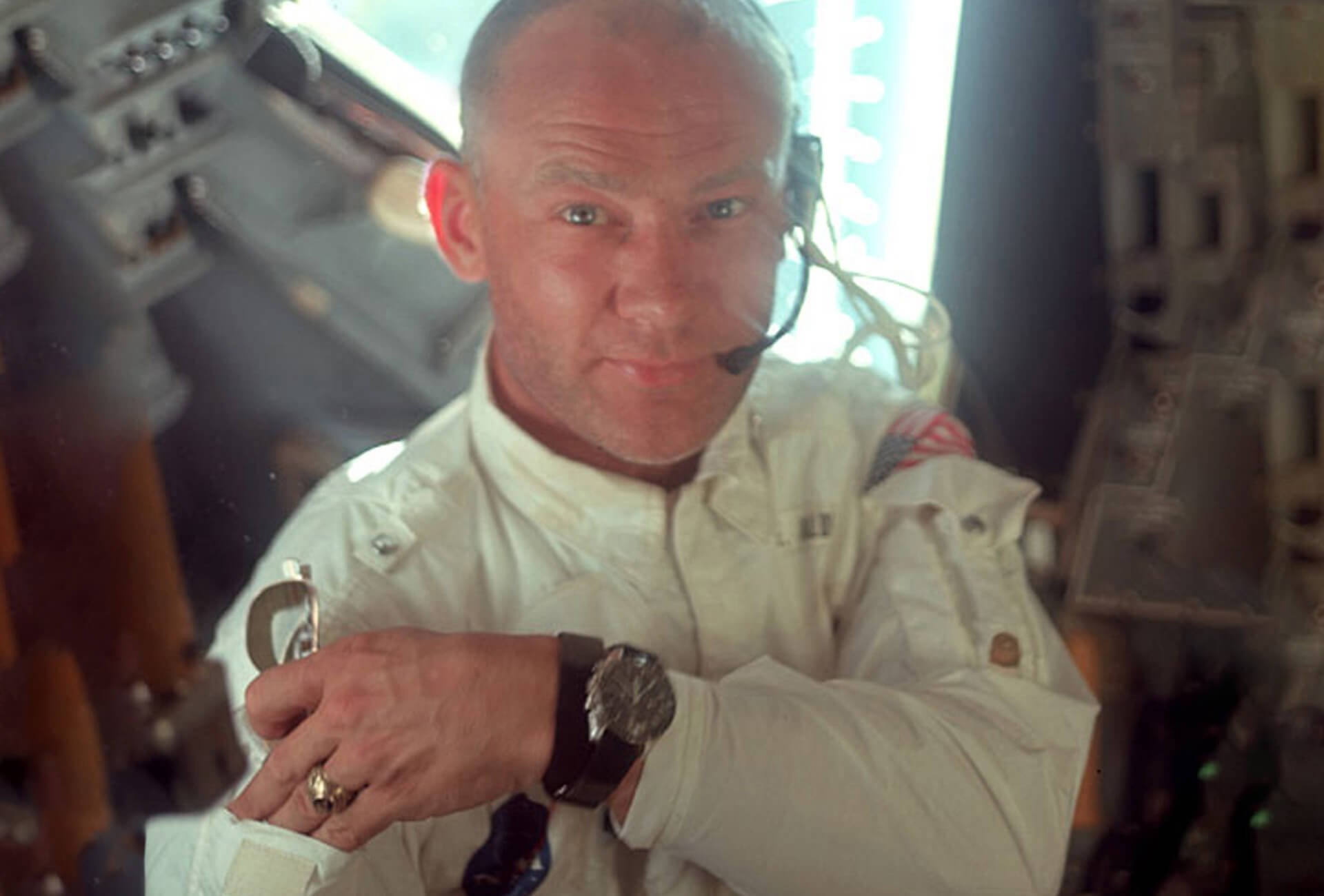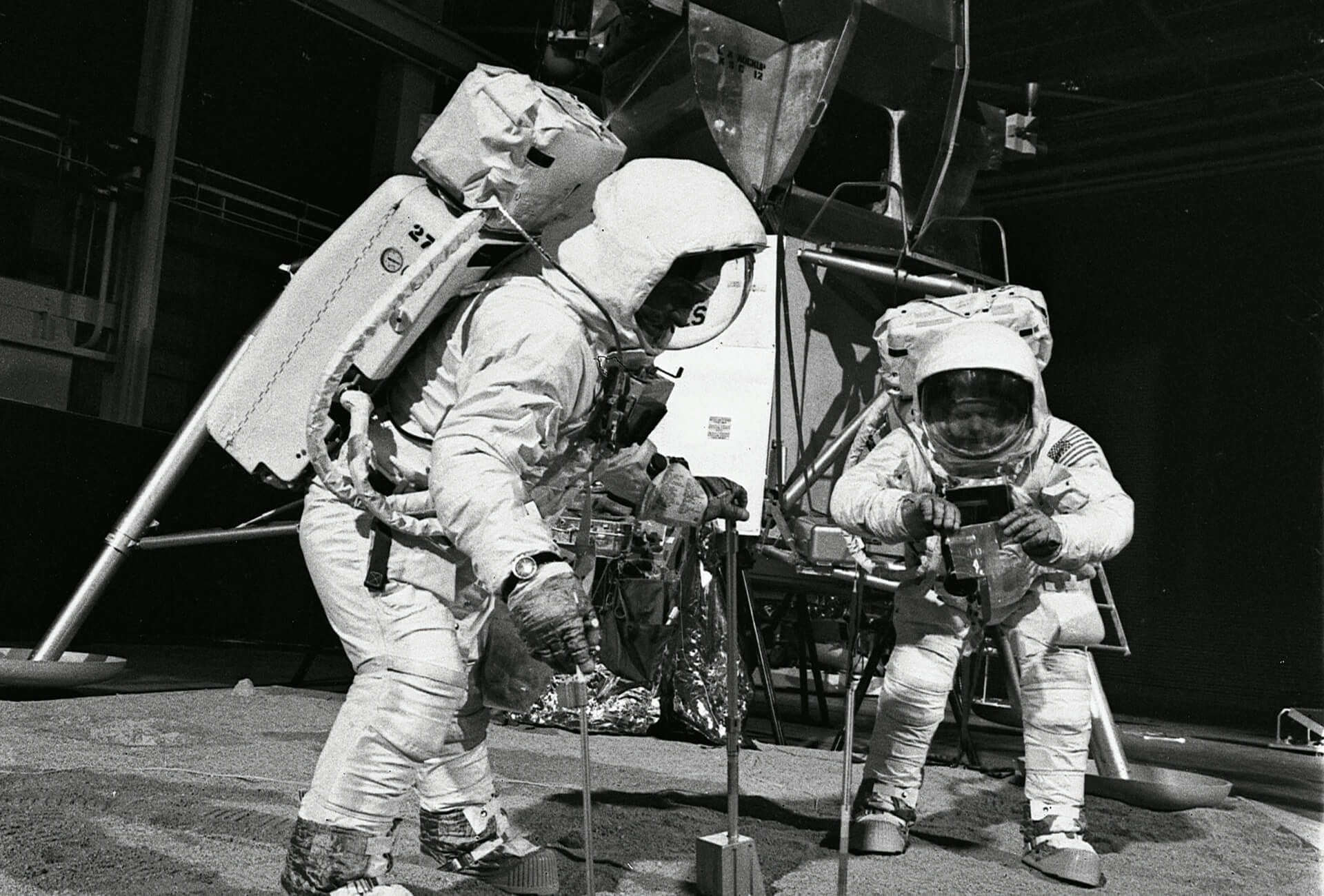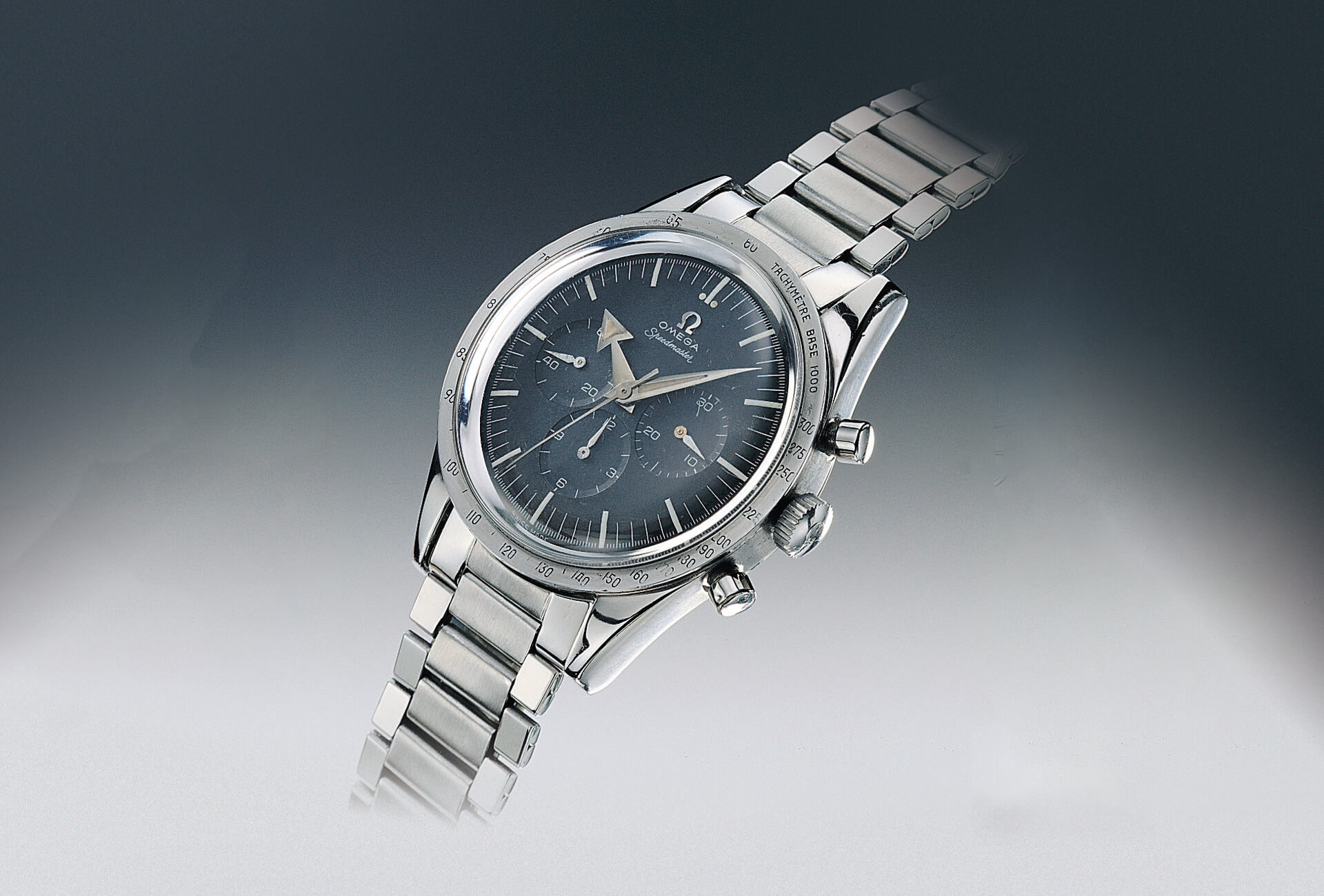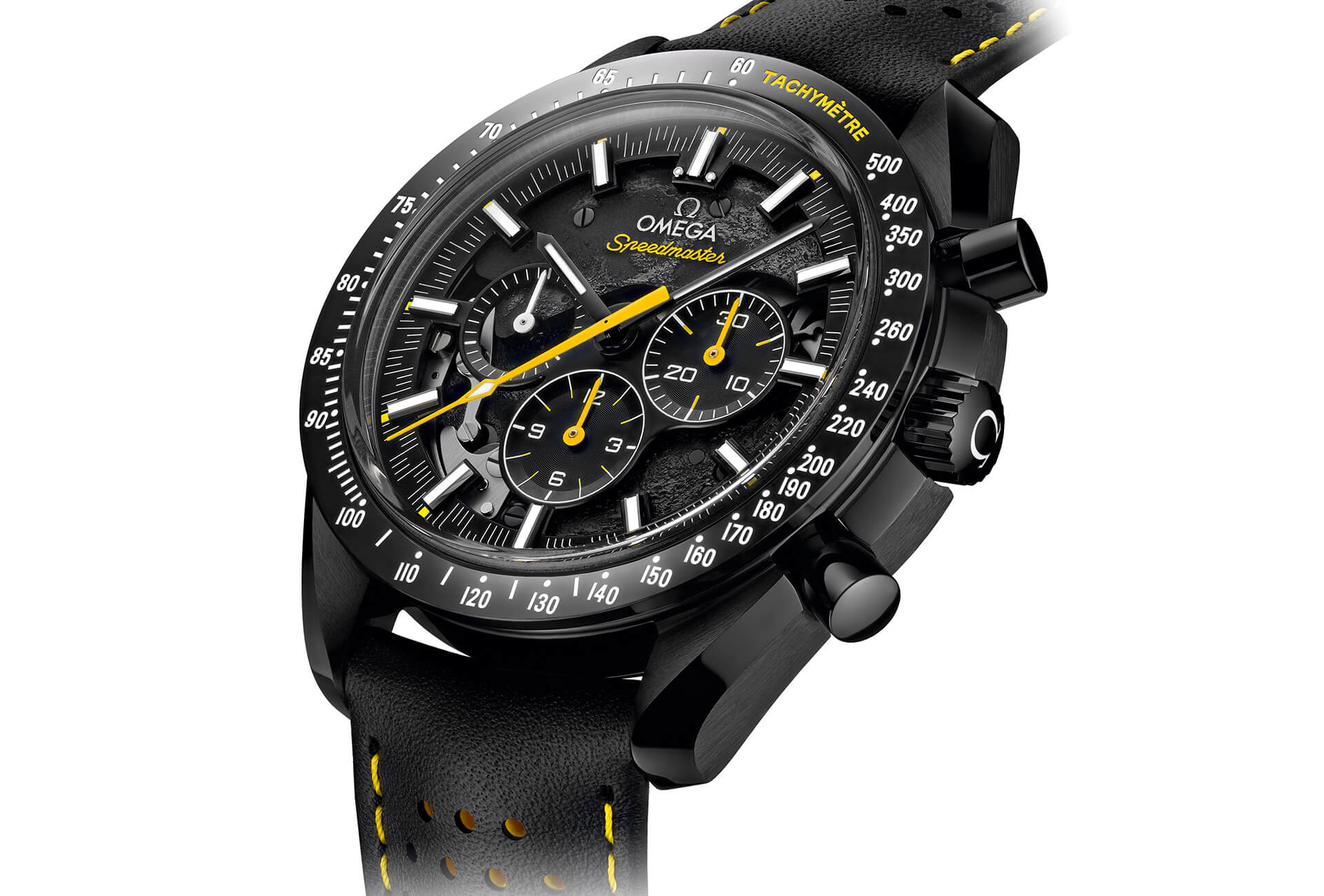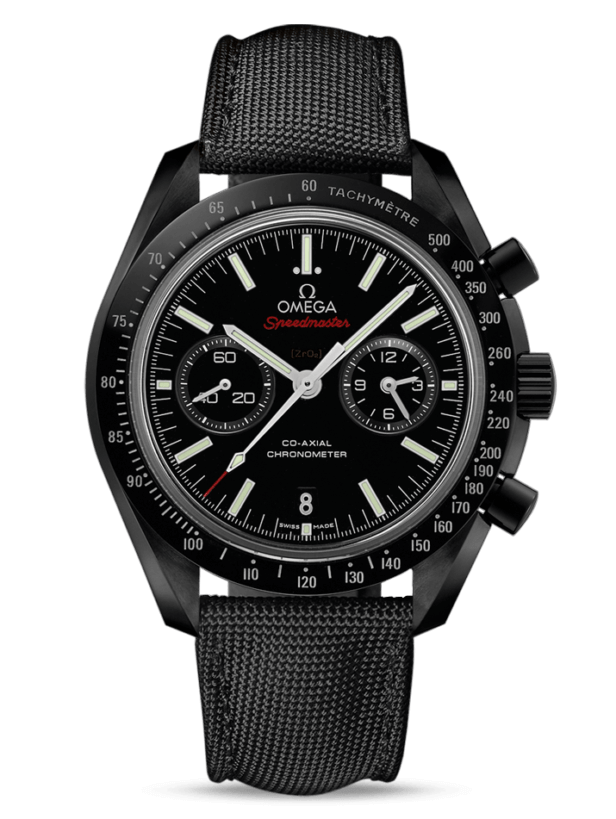Omega had it all mapped out… and still things didn’t go quite as planned. Who would have imagined that a watch designed to rule the racing circuit would become the “official” watch of NASA astronauts? The reason is simple: performance. At the time of its launch in 1957, one of a trilogy of professional watches, the Speedmaster was intended for racing drivers, the Seamaster for divers, and the Railmaster for scientists and engineers working in proximity to powerful magnetic fields. The Seamaster and the Railmaster didn’t deviate from the course Omega had set them. The Speedmaster, on the other hand, quickly veered off-track, joining American astronauts – won over by its performance, functionality and classic design – in their pursuit of new horizons.
The future Moonwatch ready for lift-off
The Speedmaster’s space adventure began in 1962, kickstarted by a group of astronauts that included Walter “Wally” Schirra and Leroy Gordon “Gordo” Cooper. The two went shopping for watches to wear during their flight, and came back with a second-generation Speedmaster CK2998. Wally Schirra wore his for the Mercury-Atlas 8 mission. After the Mercury program, NASA recognised the need for an officially approved watch for use in training and flights. The decision couldn’t have come at a better time, as the agency was in the process of evaluating all the equipment currently issued to its astronauts. This was the space race after all, and nothing could be left to chance. NASA put three watches through their paces, subjecting them to testing that included high and low temperatures, shock, oxygen atmosphere, vibration and high pressure. The chronograph submitted by Omega was the only one to survive. As well as withstanding these extreme conditions, its accuracy fell well within the range required by NASA, and so on March 1st 1965 the Speedmaster ST105.003 was declared “flight qualified for all manned space missions”.
A small step for a man, a giant step for the Speedmaster
This qualification, amply warranted from a technology point of view, was marketing gold for Omega. Just imagine: you too can own the same Omega Speedmaster that every American astronaut is wearing in space. And this was just the beginning. The defining moment of space exploration and the entire twentieth century came on July 21st 1969 when a man walked on the moon. Buzz Aldrin, who stepped onto the lunar surface a quarter of an hour after Neil Armstrong, did so with his Speedmaster Professional on his wrist, making it the first and only watch ever to have been worn on the moon. The legend of the Moonwatch was in motion.
An icon and a classic
Of course, collectors know that the Speedmaster owes its phenomenal success to more than just its history, however fabulous. Without the very latest mechanical technology, without a design impervious to trends, it’s unlikely the Speedmaster would have come through so many generations, its appeal intact. Design-wise, the Speedmaster has a raft of distinctive traits, starting with the tachymeter scale on the bezel – a novelty back when tachymeter scales were inscribed on the dial. Other immediately discernible features are the clean dial and its domed crystal. The curve of the lugs is another important feature of the case which, since 1964, has adopted a subtle and perfectly mastered asymmetry which seamlessly integrates the crown and the two chrono pushers. The past six decades have been peppered with several hundred versions , from the Broad Arrow in 1957 to the brand-new Dark Side of the Moon via aesthetic variations such as the Mark III (1971) and the Alaska Project (2008). But throughout all this time, the basic design features have remained unchanged.
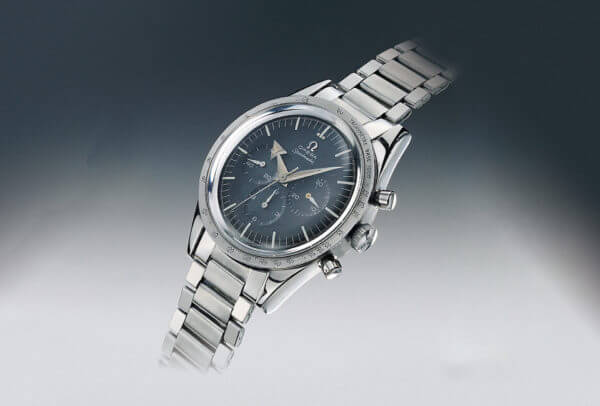
From a movement point of view, the Speedmaster owes its longevity to some of the most reliable mechanical calibres in the world. From the manual-wind Omega 321 inside the very first Speedmaster (1957) to Calibre 861 in 1968 – replaced by improved versions, the 1861 then the 1863 that still powers the Moonwatch today –, not forgetting a brief foray into electronics, the Speedmaster has housed Omega’s strongest technical innovations. They include recent developments such as the Co-Axial escapement and Master Chronometer certification. Without this cutting-edge technology, the Moonwatch would probably never have become one of the most famous chronographs in the world. Would the Speedmaster even have made it into space? The story of the Speedmaster is about a quest for performance. It put Omega into orbit in the 1960s. And most exciting of all, the adventure continues to this day…









